Past Features (2016)
Text: Esther Chok
Edit: Prof. Joseph Bosco
Anthropologists have been interested in studying masks and their rich symbolic content in various cultures and contexts. Masks have been used to conceal, transform, and represent identities (Pollock 1995:584). They not only represent or originate from positive images, but also reveal what the community disapproves of (Lévi Strauss 2013:6). The characters they represent, or even the colors they use, may reflect their belief and classification of sacredness and profanity.
Claude Lévi-Strauss, a notable French anthropologist, studied the masks of the Salish, Nootka, and Kwakiutl, and wrote the book The Way of the Masks. He believed that every type of mask is connected with its own myth, which provides an explanation on its origin and supernatural power, and assures its value in the ceremonial, economic and social aspect of the society (Lévi-Strauss 2013:14).
Take Tibetan masks as an example: Tibet has a great variety of masks, which can be divided into three major categories: masks for Chams (religious dances), hanging masks and masks for operas. The Tibetan masks used for Chams and operas are heavily colored by totemism, and the masks of a cow, tiger, dragon and phoenix are imitations of the scared figures of their religion (Huarui 1998:112). The “Tibetan Twelve Masks”, which can be found in Sichuan, China, are commonly used in a Tibetan dance called caogai wu. During important ceremonial events, the Tibetans will perform this dance and play drums and gongs. They will wear wooden masks representing various animals and characters. The dance performance can take place at various locations, for example, on the roads, by lakes, and at gathering places. There are as many as 40 ways to perform the dance. The dance with these twelve masks is a gesture of Tibetan people to pray for peace and stability. While dancing, they also sing the “Song of Liquor” as a toast to guests and to recall past times.
文: 竺穎琛
編輯: 林舟教授
面具豐富的象徵內容是人類學學者其中一個感興趣的研究題目。面具有著隱藏、轉換、及表現不同身份的功能(Pollock 1995:584)。它不僅帶有肯定的意義,還有否定的意思;它亦不只是來自它所表達的,還源於它所排斥的(李維史陀 2013:6)。面具所模仿的對象甚至使用的顏色,都可能反映了該群體的信仰和喜惡。
著名的法國人類學家克勞德‧李維史陀曾研究薩利希人、努特卡人和夸扣特爾人的面具及與之相關的神話,並撰寫著作《面具之道》。在書中,李維史陀(2013:14)提出每一種類型的面具都與神話有關聯,神話不但能對有關面具的傳說或其超自然力量的來源作出解釋,並能確認它們在儀式、經濟和社會上的價值。
以藏族的面具為例:藏族面具繁多,大致分為羌姆(跳神)面具,懸掛面具和藏戲面具三種類別。羌姆及藏戲所用的面具流露圖騰崇拜的色彩,當中牛、虎、龍、鳳凰等面具乃是模仿他們教派的神靈(華銳 1998:112)。流傳於四川南坪、平武等縣的藏族十二相面具主要用於跳「曹蓋舞」。每逢重要日子,當地藏族群眾都喜歡跳這種舞;跳時頭戴各種動物、人物、及鬼怪的木雕面具,並以鑼鼓伴奏。曹蓋舞分別可以在路上、海邊、場壩等不同地方跳,跳的方法達四十多種。傳統上,人們跳此種舞以祈求平安,跳時並會邊唱「酒曲子」,以敬謝賓客和懷緬歷史。
參考文獻
Huarui, Dongzhi (華銳‧東智). 1998. 藏族面具藝術淺識 (Zang zu mian ju yi shu qian shi).《中國藏學》(China Tibetology) 1998(4):108-114.
Lévi Strauss, Claude (克勞德‧李維史陀). 2013 (原作 Orig. 1979).《面具之道》 (La Voie Des Masques) (張祖建譯 Zhang Zujian, Trans.). 中國:中國人文大學出版社 (China: China Remin University Press).
Pollock, D. 1995. “Masks and the Semiotics of Identity.” The Journal of the Royal Anthropological Institute 1(3):581-597.
展品
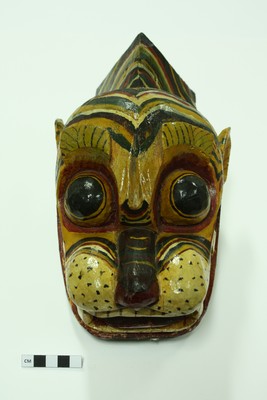 |
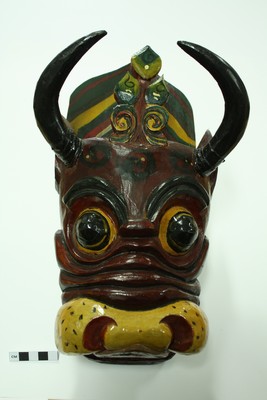 |
 |
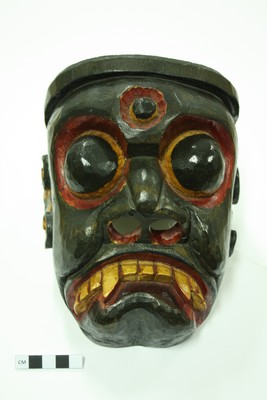 |
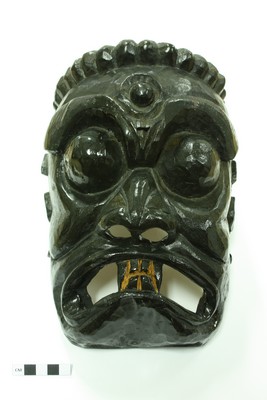 |
 |
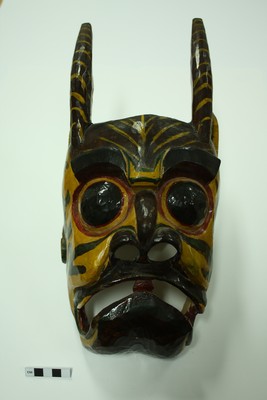 |
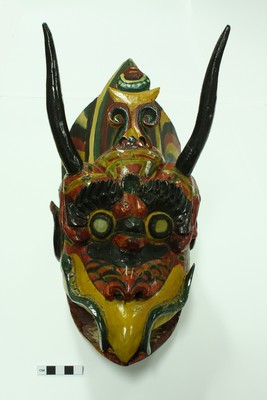 |
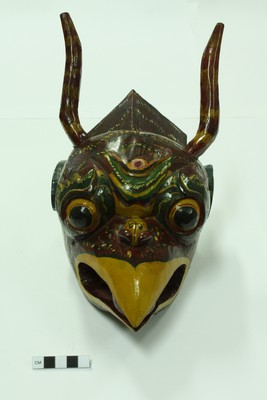 |
 |
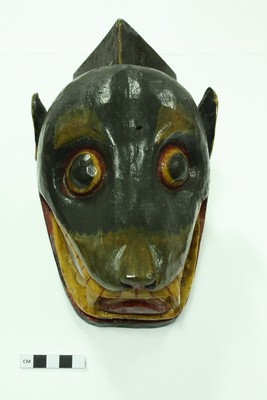 |
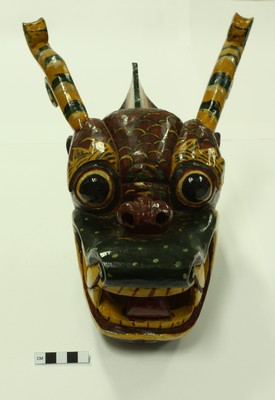 |
